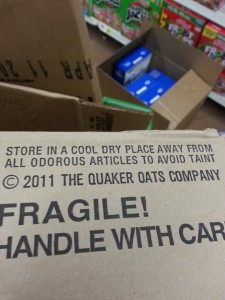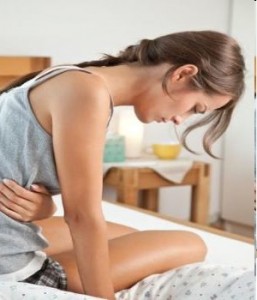On February 12, 2013, Christina Huffington posted an absolutely wonderful piece entitled “Menstrual Facts: Twelve Things You May Not Know About Your Period”.
I became aware of it shortly after it posted and wondered how I could incorporate it into PeriodWise without plagiarizing. Oh, how I wanted to claim what she had written as my own. 
Others had placed bits and pieces on their blogs, some with links to the original work…others leaving the reader to assume it originated with them.
I was in a quandary as to what to do and how to do.
After all, it contains great period wise information – and is well worth sharing.
Two comments lead into her Twelve Things:
- If you want to view VICE’s 2012 photo series “There Will Be Blood,” you have to confirm you are over 18 years old. The series is neither violent — as its title might imply — nor sexualized, so why the NSFW label? Because the photographer, Emma Arvida Bystrom, captured women visibly menstruating while engaging in otherwise ordinary daily tasks. Your period, as HuffPost Women Associate Editor Emma Gray put it, is something that we’re taught “should be covered, hidden and cleaned up.”
- That may be why some women don’t seem to know important details about how their bodies work. For instance, a 2012 Australian survey found that only “13 percent of women could correctly answer which days of their menstrual cycle they were fertile.”
(I had seen VICE’s 2012 photo series “There Will Be Blood” last year before PeriodWise began – awesome pictures – and had forgotten about it. If you’ve not seen the pictures, I encourage you to do so.)
I’ll admit, I was surprised by the Australian survey’s findings that only 13% of women could correctly answer which days of their cycle they are fertile. I wonder…how period wise are my readers? Do YOU know which days of your cycle you are fertile/ovulate? Do YOU know how to know your fertile days?
Hardly a day goes by that I don’t learn something new about menstruation, the menstrual cycle or participants in it (female AND male).
Christina Huffington‘s “Twelve Things You May Not Know About Your Period” follows. Take a moment and read through the list. You might learn something. I did.
Twelve Things You May Not Know About Your Period – by Christina Huffington
1. You can get pregnant on your period. Yes, it is highly unlikely but it’s not impossible so don’t use menstruating as an excuse not to use protection.
2. You are most fertile during — and around — ovulation. Ovulation — the release of an egg from an ovary — typically happens midway through a woman’s cycle. Ovulation calculators are helpful in tracking your cycle.
3. Irregular periods can mean any number of things. Irregular menstruation — whether in the form of missing a period, spotting between periods or a period lasting more than seven days — can be caused by everything from extreme weight loss or stress to pregnancy to the use of certain drugs to serious illnesses like uterine cancer. Consult your doctor if you are concerned about an irregular period.
4. Walt Disney made a movie about it. In 1946, Disney released The Story Of Menstruation as an educational aid for sex ed classes. It is rumored that the film was the first to use the word “vagina.” Betcha didn’t expect that from the pretty princess factory!
5. The average period releases less than a cup of blood. Complain about heavy flow all you want, but the fact is that most women lose between a few tablespoons and a cup each month. This is not to say that Tampax ‘super plus’ are not sometimes necessary.
6. Menstruation by any other name is still menstruation. Remember in middle school when you were embarrassed to say you were on your period so you and your friends made up code names? No? Uh, well… Code names through the ages include Crimson Tide, TOM (time of the month), Elmo riding the cotton pony, Aunt Flo, the rag and the, er, crime scene.
7. Views on period sex vary. We know sexual preference is individual — there’s a spectrum on everything from preferred gender to preferred position — so it makes sense that opinion on period sex would be individual too. (This goes for both men and women.)
8. On that note, your period might make you frisker than usual. Progesterone — the hormone believed to potentially lower your libido — is at its lowest during your period so if you’re craving more than a Snickers, chances are you’re not alone.
9. No one knows if period syncing is a real thing. Yes, it’s very well possible that you / your sister / your roommate / your partner share more than just secrets. The science behind the theory continues to be controversial, but as anyone who has ever found themselves reaching for Midol and a pair of sweatpants at the same time as their BFF can attest, it seems pretty legitimate.
10. Menstruation is still considered taboo in some places. While pre-teen girls in America may have to endure teasing from their less-than-understanding male classmates, in places like rural India girls are told not to cook food lest it be polluted, not to touch idols lest they be defiled and not to handle pickles because they will go rotten.
11. Always was the first company to show blood in an advertisement for sanitary napkins — in 2011. They broke the “women bleed blue liquid” trend but the ad still only appeared in print. Guess the taboo factor still stands.
12. The average age a girl in the United States gets her period is 12. Girls are getting their periods younger than ever and it is unknown what’s causing the puberty speedup, with theories ranging from environmental factors to higher fat diets to stress.
 On Facebook I found this picture with the comment:
On Facebook I found this picture with the comment:
 brains behind
brains behind 
